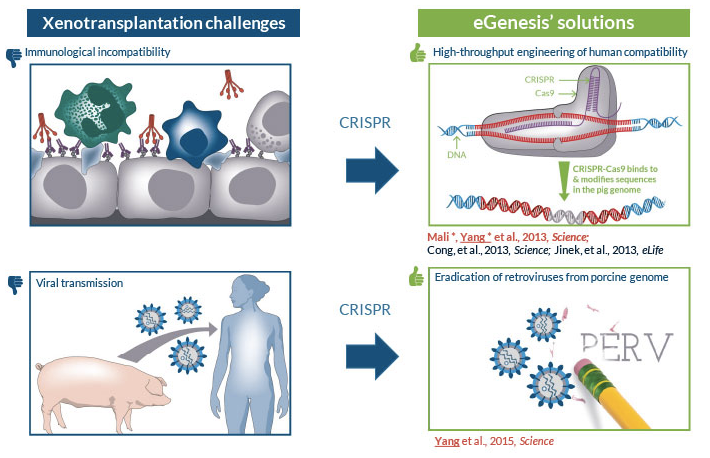A team of researchers in Cambridge, Massachusetts, have hit a breakthrough in their quest to develop pigs whose organs and other tissues can be transplanted into humans.
The team, led by a biotechnology company called eGenesis, announced Thursday that it has successfully used a powerful gene-editing technique known as CRISPR to modify the DNA in pig cells and remove a number of viruses that make pig organs unsuitable for human transplant. (Read more here on how CRISPR works and its potential for humans.)
Those virus-free cells were then used to fertilize several pig embryos, which were implanted in sows who have since given birth to virus-free pigs.

It’s a huge step, as those viruses (more specifically known as porcine endogenous retroviruses, or PERVs) pose a not-yet-fully-understood ― but potentially significant ― health threat to humans.
In a clinical trial in Europe, for example, researchers genetically modified a similar retrovirus from mice to help treat severe immunodeficiency in children. Most of the children benefited from the treatment, notes the Food and Drug Administration, but some developed leukemia.
In other words, we don’t need to know the exact effects of the viruses to know we don’t want them around.
Creating PERV-free pigs is the first step in a four-step process to ultimately create pig organs suitable for human transplant or “xenotransplantation,” Dr. Luhan Yang, a co-founder of eGenesis and the company’s chief science officer, explained to HuffPost.
(Doctors have long used pig and cow valves to replace their leaky equivalents in the human heart, but kidneys and more complex organs represent a much bigger achievement.)
Next, the company needs to make sure it can consistently replicate virus-free pigs, which it’s already well on its way to doing.
After that, Yang explained, it will need to test how the human immune system responds to the organs and modify them so they aren’t rejected, creating what she referred to as “pig 2.0,” featuring “advanced immune compatibility.”

Step four will be developing the infrastructure to produce and deliver lifesaving organs worldwide.
Yang didn’t want to speculate on a precise timeline for when xenotransplantation might be a common procedure, but the company is making very real, tangible progress toward that goal.
Other promising technologies in development include 3D-printing organs and growing them in a petri dish.
In the United States alone, almost 117,000 people are currently awaiting a lifesaving organ transplant, according to the United Network for Organ Sharing. About 60 percent of transplant operations since 1988 have been for a kidney (which has an average wait time of five years), 22 percent a liver (wait time: 11 months), 10 percent a heart (four months), and 5 percent a lung (four months).
